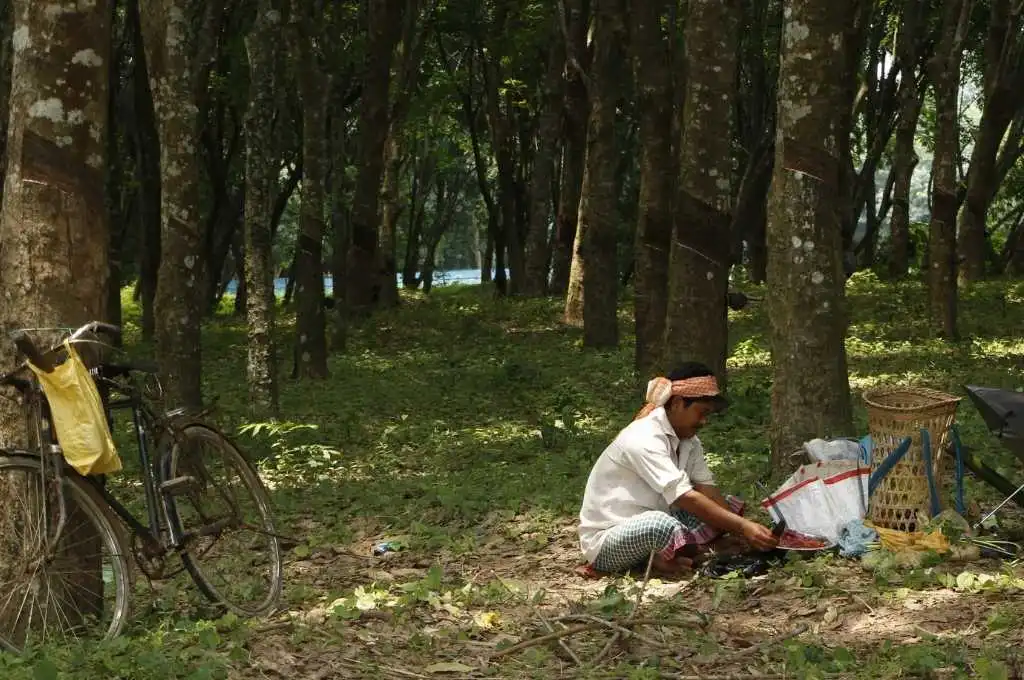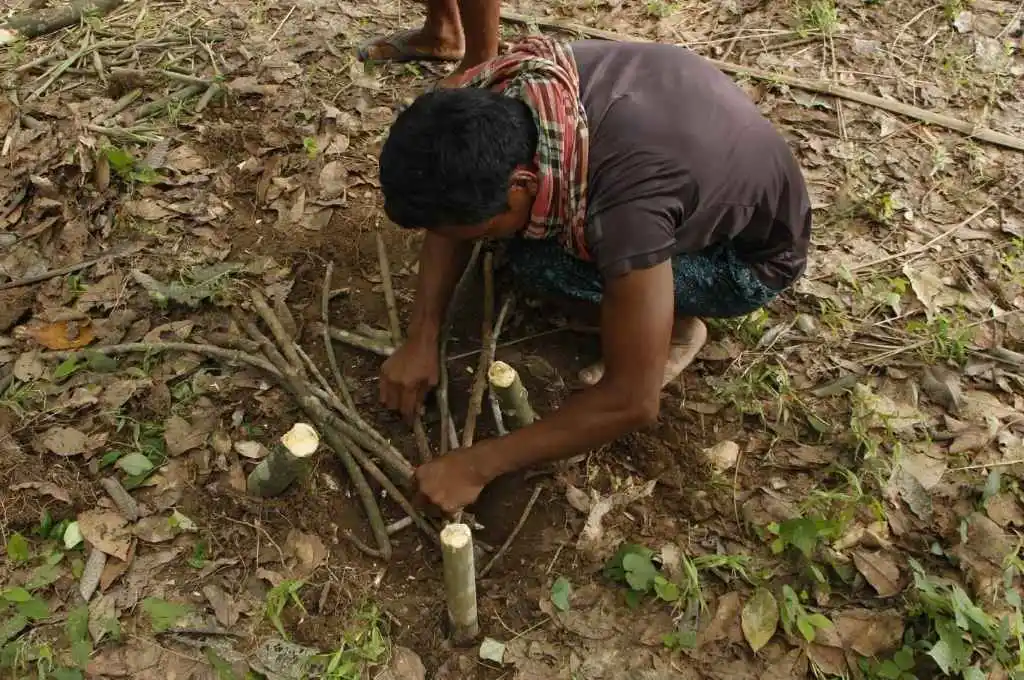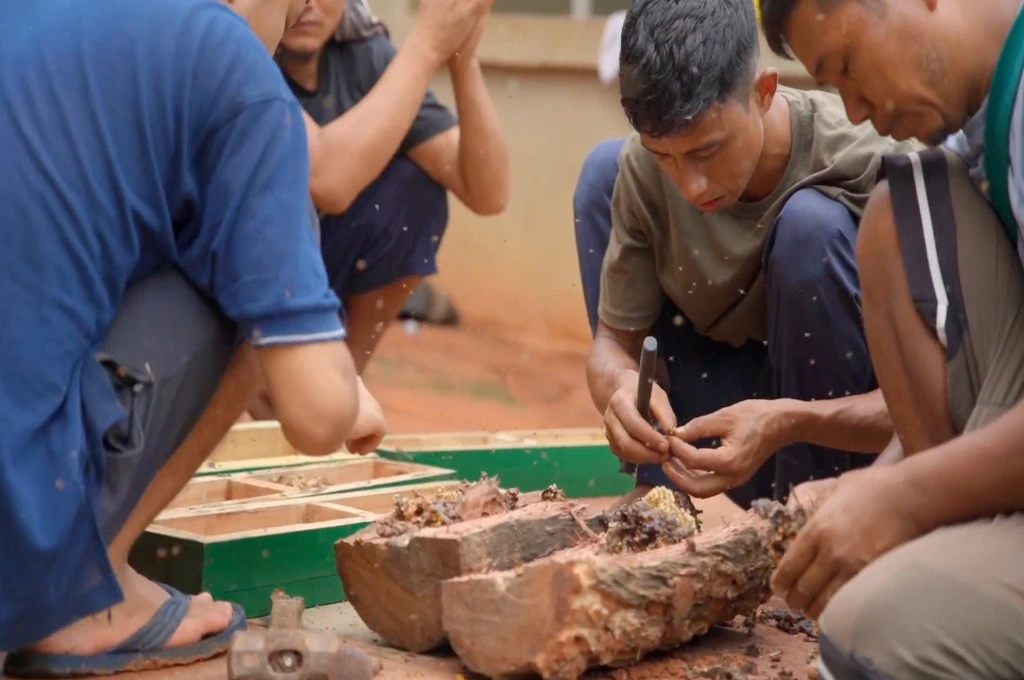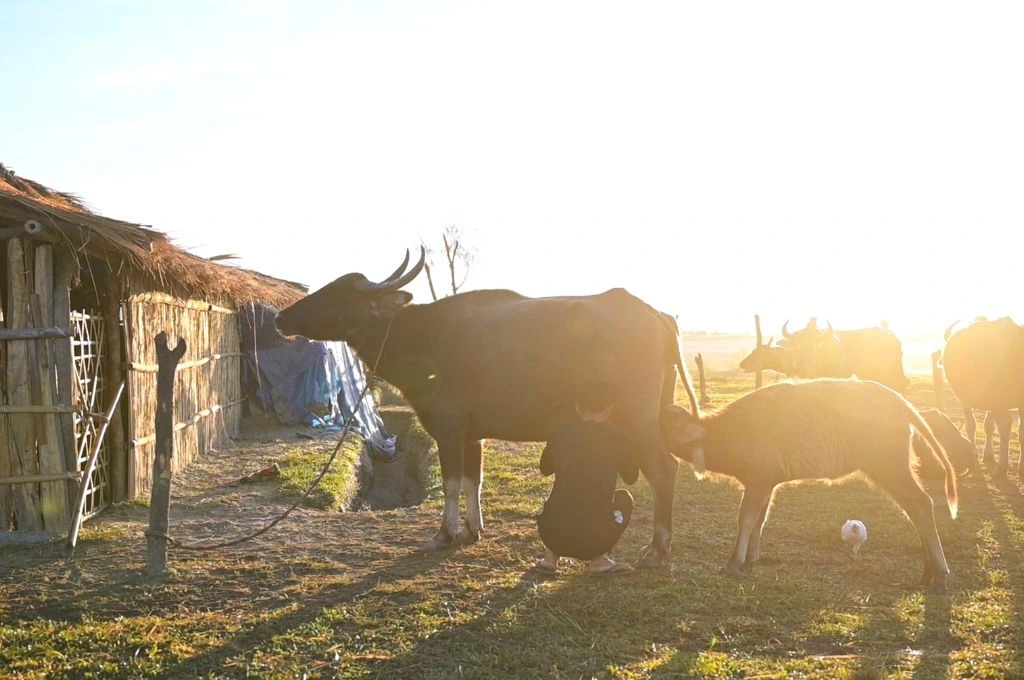Located in northeastern India, the state of Tripura is known for its natural beauty and cultural heritage. Its economy is predominantly agriculture-based, with 70 percent of the population directly or indirectly dependent on agriculture and allied activities. In the financial year 2022–23, agriculture contributed 44 percent to the state’s economy. However, most farmers have marginal and small landholdings, leading to limited income. Additionally, Tripura’s geographical isolation from the rest of India—barring narrow strips connecting it to Assam and Mizoram, the state shares most of its border with Bangladesh—and rugged terrain prevent farming from becoming a sustainable livelihood option. But how do these challenges translate on the ground to complicate the lives of the state’s residents?
In order to understand this, we spoke with nonprofits working on livelihoods in Tripura. Through these conversations, we learned how Tripura’s situation differs even from neighbouring northeastern states, the attempts these organisations have made to improve conditions, and the support they need to achieve their objectives.
The culture of farming in Tripura
Rice is the staple food for most people in Tripura and is also the most common crop in the area. Prasanta Debbarma, integrator at SeSTA—an organisation that works on livelihoods in the northeastern states—says, “We work with communities such as Debbarma, Kolai, Reang, and Jamatia, and most of them practise monoculture.” This is mainly due to limited water sources for irrigation. Only farmers with access to water near their paddy fields can grow rice year-round. He adds, “The other issue is that many farmers are smallholders. The average landholding here is approximately 0.5 acre, so farmers can’t afford to diversify much. They usually have to choose between rice and vegetables. If they grow rice, there’s often not enough space or water for a vegetable crop.”

According to Prasanta, the farmers work in the rice fields for only two months a year, leaving the fields fallow for the rest of the year. “We have seen that for bigger families, the rice stock runs out within seven to eight months, and then they have to buy it from the market.”
SeSTA is trying to encourage the farmers to take up a range of livelihood activities. Prasanta says, “We want them to adopt at least three activities at a time.” The organisation has been promoting livestock rearing work, such as pig and goat farming, and is connecting farmers with various government schemes. But all agricultural and agri-allied businesses stumble upon the same barriers: poor transportation and a limited market.

Climate change and other roadblocks
Tripura’s environmental challenges further complicate the lives of farmers. Frequent floods lead to crop damage as well as loss of livestock, making things particularly tough for marginal and landless farmers who depend on their animals.
The market is quite distant and difficult to access for producers.
There are other challenges too. In the past, Jampui Hills in North Tripura district was popular for its orange plantations, but growers have now shifted to areca nut. While the authorities attribute this shift to climate change, the locals speak of a disease that killed their trees. Laldawnpuii Sailo, founder of Zamzo, an organisation working in Jampui Hills, says, “Deforestation has worsened climate effects, disrupted agricultural productivity, and endangered the livelihoods of families who have depended on farming for generations.”
Now, the areca nut producers face a new problem: the construction of the National Highway, for which slopes are being artificially modified, has resulted in an increase in landslides. The primary market for areca nuts is in Assam, and the goods must travel from Jampui Hills through the sole available route, Kanchanpur Road, to reach the rest of Tripura and Assam. Laldawnpuii says, “During the monsoons, there’s been an increase in landslides, making travel through Kanchanpur Road difficult.” As the market is quite distant and difficult to access for producers, the transport and sale of the produce is primarily handled by middlemen.

The middleman is the king
SeSTA, which also works in neighbouring Assam, finds the market structure in Tripura to be quite distinct. Shanti Bikash Chakma, an executive with the organisation in West Tripura district’s Hezamara block, participated in a survey of remote markets in Assam, such as those in Bongaigaon district. Comparing the markets in Assam and Tripura, Shanti explains, “In Assam, vendors from major cities such as Guwahati would visit to collect the produce, thus providing local farmers direct access to buyers. On the other hand, in Tripura, vendors from larger markets rarely come to visit small village markets; the middlemen therefore have complete control over the price offered to the villagers.”
Prasanta adds, “The distances between most of the locations where we work are vast, and transportation facilities are very poor. Most of the farms are far from the road, so bringing the produce from the fields and transporting it to the market is a substantial task.” He cites the example of Raishyabari, a block in Tripura’s Dhalai district known for its bananas. “The cost of transportation from there to Agartala [the capital city] is very high, which forces the farmers to sell their produce to local vendors at lower than market prices.” In such cases, the vendors act as middlemen, and the farmers have little choice but to settle for the quoted price.
According to Laldawnpuii, the situation is no different in Jampui Hills. “The middlemen look at the size of the areca nut bags and quote a price. They don’t even weigh it. But people give in because there’s no other option.”

High cost and no takers for alternatives
Compared with Assam, it is not only transportation costs that are higher in Tripura but also the costs of labour and building materials. For example, a pigsty costs INR 8,000 in Assam, a piglet is INR 3,200, and the feed for six months costs approximately INR 2,100. In contrast, Bhajakti Debbarma, a pig farmer from Hezamara block, shares, “Constructing my two-room pigsty cost approximately INR 21,000, including labour and transportation expenses. I paid INR 15,000 for a six-month-old piglet, and the feed for three months cost INR 2,700.”
Nonprofits have tried to look for alternatives everywhere, including investing in the handicraft sector, but these efforts have seen little success. Bibhuti Debbarma, founder of Youth for Integration, a nonprofit active in various districts of Tripura, says, “We have conducted skill programmes with weavers and craftspeople. But bamboo products such as bottles and baskets tend to have demand only during festival seasons, limiting the artisans’ income opportunities throughout the year.” He adds, “Artisans who weave rignai (a traditional attire) also struggle to compete in the market. These weavers put a lot of time and effort into their craft, but their products are undercut by cheaper, mass-produced versions made on power looms outside the state. These products sell at much cheaper rates than local artisans’ products, making it difficult for them to compete.”
Tripura is the second largest producer of rubber in India, but there is a lack of proper processing units.
Another issue is that Tripura lacks a strong brand identity for any specific product, unlike Assam with bamboo or Nagaland with king chili, for instance. Prasanta elaborates, “If someone from another state asks us about a signature vegetable from our state, we’re clueless. Our farmers plant whatever generates income at a given time. You can ask anyone where king chili is from and they will say Nagaland, even though there are other states that grow it; it is the same for squash and Meghalaya.”
Tripura does have unique products, such as the queen pineapple, for which it holds a Geographical Indication (GI) tag. This tag signifies that the state is the place of origin for the fruit and vouches for its quality. However, the fruit isn’t grown across the state, and thus farmers in only certain parts benefit from its sale. Prasanta says, “Queen pineapple is cultivated only in certain areas of Tripura, especially the North Tripura district, and can be harvested for just a few months.” Additionally, the state is the second largest producer of rubber in India, but due to a lack of proper processing units, most of the produce is sent off to other states. This further reduces the locals’ profit potential.
Little money and a lot of hope
Youth for Integration finds that livelihood infrastructure is almost non-existent in the remote regions of Tripura. Bibhuti notes, “While there are government training centres offering essential skills in handicrafts and handloom products, these efforts often lack proper follow-up, leaving trainees without the guidance they need to sustain their ventures.”
Limited support and poor market access contribute to reluctance among Tripura’s educated youth to invest in local entrepreneurship. “The states’ educated youth aspire to become entrepreneurs, but systemic issues dissuade them. As a result, they either struggle for the few available formal jobs or migrate to other states for better prospects,” says Bibhuti.
Even if the nonprofits want to change this, there’s very little funding coming their way. CSR initiatives hardly reach the state. “Apart from the Oil and Natural Gas Corporation [ONGC], very few companies extend CSR funding to Tripura. Most of it stops at Guwahati in Assam,” says Bibhuti. Owing to better connectivity, Guwahati has emerged an economic hub in the Northeast. There’s also a dearth of sustained funding from the state government. Bibhuti adds, “Once in a while, they fund nonprofits to organise awareness events. But we don’t receive money for larger, continuous projects.”
The nonprofits we spoke with believe that the state has the natural resources, talent, and cultural richness needed to create a unique space in both regional and national markets. But a change in fortune will require a more integrated and sustained approach. Improved funding channels, consistent follow-ups on training programmes, and partnerships with private companies could provide the kind of support local businesses need to thrive. Additionally, promoting grassroots initiatives in meaningful ways and establishing a reliable market for local products—beyond seasonal or festival sales—could increase incomes for artisans and small-scale farmers alike.
—
Know more




